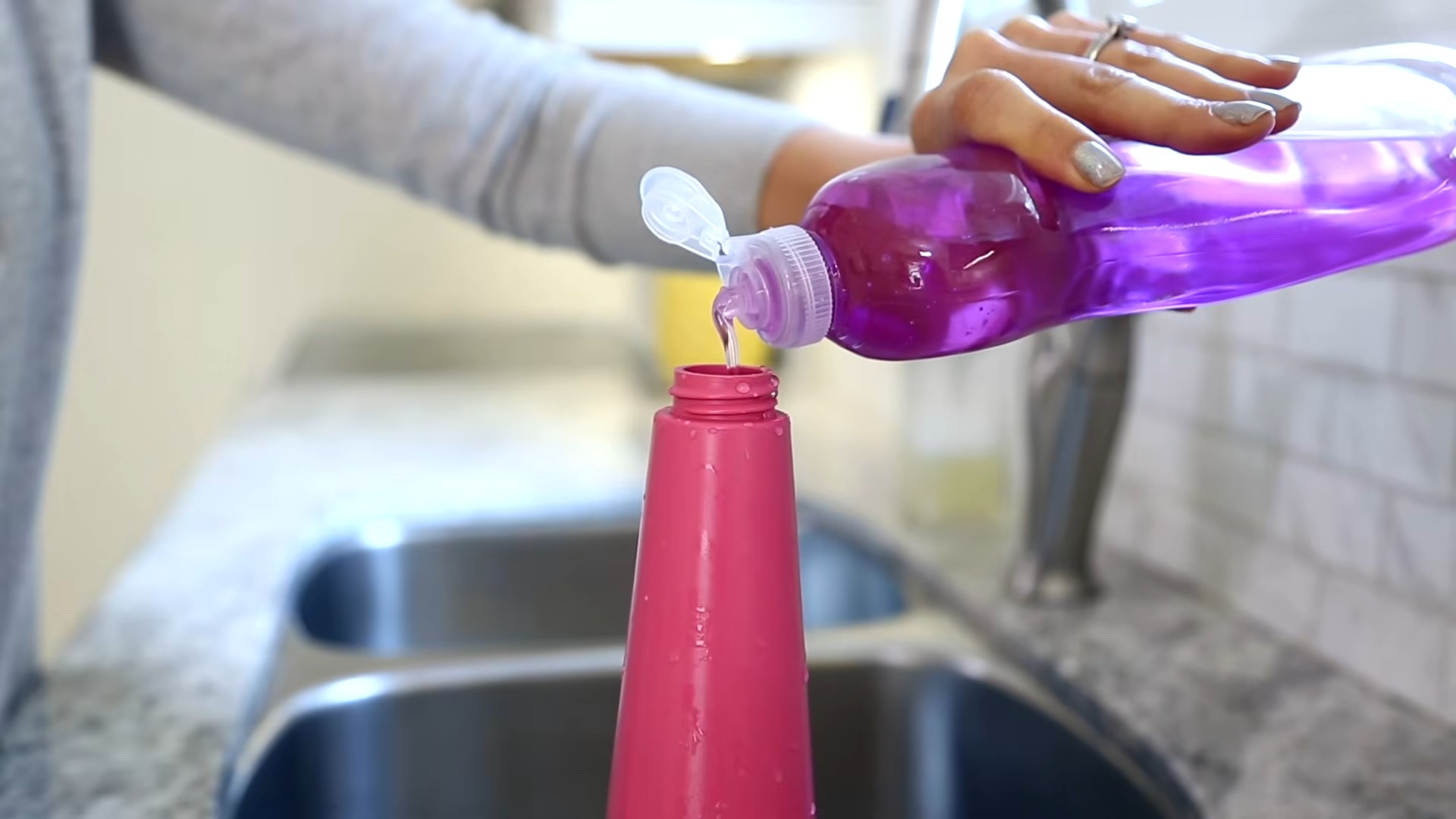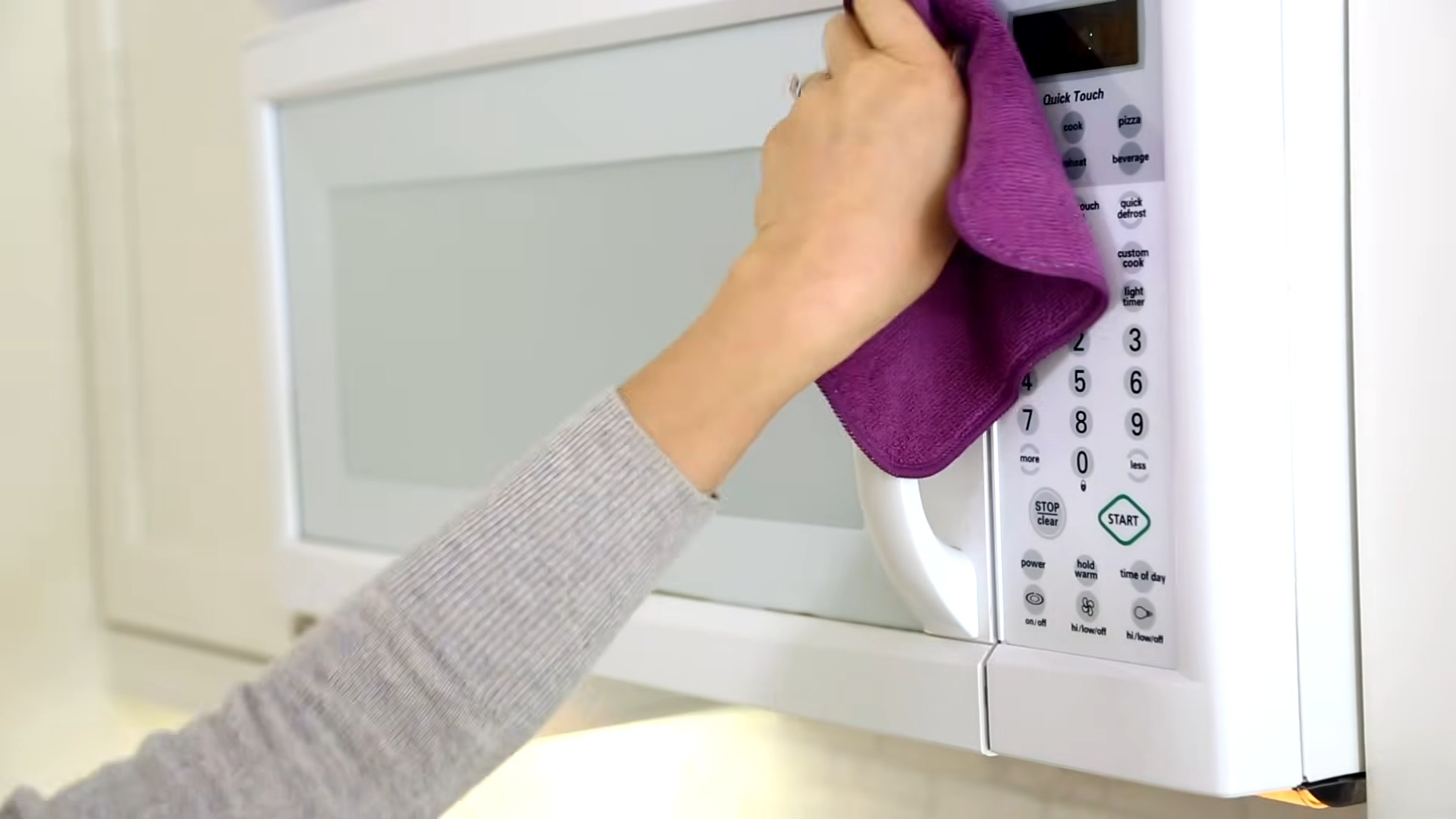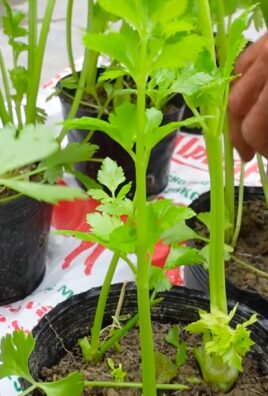Dish soap cleaning hacks – who knew these three little words could unlock a world of sparkling clean possibilities? I’m always on the lookout for simple, effective ways to tackle household chores, and let me tell you, I’ve stumbled upon a game-changer. Forget spending a fortune on specialized cleaners; your trusty bottle of dish soap is about to become your new best friend.
Believe it or not, using soap for cleaning isn’t a new fad. Historically, soaps made from natural fats and oils have been used for centuries to cleanse everything from our bodies to our homes. Think about it – our grandmothers probably relied on simple soap solutions for most of their cleaning needs! While the formulas have evolved, the basic principle remains the same: soap effectively breaks down grease and grime.
But why should you care about dish soap cleaning hacks? Well, in today’s busy world, who has time to spend hours scrubbing? We all crave quick, efficient solutions that save us time and money. Plus, many commercial cleaners are packed with harsh chemicals that can be harmful to our health and the environment. These DIY tricks offer a safer, more eco-friendly alternative, using a product you likely already have under your sink. I’m excited to share these simple yet powerful hacks that will transform your cleaning routine and leave your home sparkling clean!

DIY Dish Soap Cleaning Powerhouse: Beyond the Dishes!
Okay, let’s be honest, dish soap is a kitchen staple, but did you know it’s a cleaning superhero in disguise? I’m going to show you how to unlock its full potential and tackle grime all over your house. Get ready to be amazed by these simple, effective, and budget-friendly dish soap cleaning hacks!
General Tips for Dish Soap Cleaning
Before we dive into the specific hacks, here are a few general tips to keep in mind:
* Dilution is Key: Dish soap is concentrated, so a little goes a long way. Always dilute it with water to avoid leaving a soapy residue.
* Test First: Before applying any dish soap solution to a large area, test it on a small, inconspicuous spot to ensure it doesn’t damage or discolor the surface.
* Rinse Thoroughly: After cleaning with dish soap, always rinse the area thoroughly with clean water to remove any remaining soap.
* Avoid Mixing with Bleach: Never, ever mix dish soap with bleach. This combination can create toxic fumes that are harmful to your health.
* Use the Right Kind: While most dish soaps will work for these hacks, consider using a gentle, pH-neutral formula, especially for delicate surfaces.
Hack 1: Sparkling Clean Windows and Mirrors
Forget expensive window cleaners! Dish soap can give you streak-free shine for pennies.
What you’ll need:
* Spray bottle
* Dish soap (a few drops)
* Water
* Microfiber cloth
Step-by-step instructions:
1. Mix the Solution: Fill the spray bottle with water. Add only 2-3 drops of dish soap. Seriously, that’s all you need! Too much soap will leave a film. Gently swirl to mix.
2. Spray the Surface: Lightly spray the window or mirror with the dish soap solution. Don’t over-saturate it.
3. Wipe Clean: Use a clean, dry microfiber cloth to wipe the surface in a circular motion.
4. Buff to Shine: If you see any streaks, use a fresh, dry section of the microfiber cloth to buff the surface until it’s sparkling.
Hack 2: Degreasing Kitchen Surfaces
Dish soap is a natural degreaser, making it perfect for tackling greasy stovetops, backsplashes, and range hoods.
What you’ll need:
* Spray bottle or bowl
* Dish soap
* Warm water
* Sponge or microfiber cloth
* Optional: Baking soda (for extra scrubbing power)
Step-by-step instructions:
1. Mix the Solution: In a spray bottle or bowl, mix a tablespoon of dish soap with a cup of warm water.
2. Apply to the Greasy Surface: Spray or apply the solution to the greasy surface. Let it sit for a few minutes to loosen the grease. For stubborn grease, you can sprinkle a little baking soda on the surface before applying the solution.
3. Scrub Gently: Use a sponge or microfiber cloth to scrub the surface gently. Avoid using abrasive scrubbers, as they can scratch the finish.
4. Rinse Thoroughly: Rinse the surface thoroughly with clean water to remove all traces of soap and grease.
5. Dry with a Clean Cloth: Dry the surface with a clean, dry cloth to prevent water spots.
Hack 3: Cleaning Bathroom Tiles and Grout
Dish soap can help remove soap scum and mildew from bathroom tiles and grout.
What you’ll need:
* Spray bottle or bowl
* Dish soap
* Warm water
* Scrub brush or old toothbrush
* Optional: White vinegar (for extra cleaning power)
Step-by-step instructions:
1. Mix the Solution: In a spray bottle or bowl, mix a tablespoon of dish soap with a cup of warm water. For extra cleaning power, you can add a tablespoon of white vinegar.
2. Apply to the Tiles and Grout: Spray or apply the solution to the tiles and grout. Let it sit for 5-10 minutes to loosen the grime.
3. Scrub the Grout: Use a scrub brush or old toothbrush to scrub the grout lines. Pay special attention to areas with mildew or soap scum.
4. Scrub the Tiles: Use a sponge or microfiber cloth to scrub the tiles.
5. Rinse Thoroughly: Rinse the tiles and grout thoroughly with clean water.
6. Dry with a Clean Cloth: Dry the tiles and grout with a clean, dry cloth to prevent water spots and mildew growth.
Hack 4: Removing Stains from Clothing
Dish soap can be surprisingly effective at removing certain types of stains from clothing, especially grease and oil stains.
What you’ll need:
* Dish soap
* Water
* Soft-bristled brush or cloth
Step-by-step instructions:
1. Test on an Inconspicuous Area: Before applying dish soap to the entire stain, test it on a small, hidden area of the garment to ensure it doesn’t damage or discolor the fabric.
2. Apply Dish Soap to the Stain: Apply a small amount of dish soap directly to the stain.
3. Gently Rub the Stain: Use a soft-bristled brush or cloth to gently rub the dish soap into the stain.
4. Let it Sit: Let the dish soap sit on the stain for 10-15 minutes.
5. Rinse Thoroughly: Rinse the garment thoroughly with cool water to remove all traces of soap.
6. Launder as Usual: Launder the garment as usual, following the care instructions on the label.
7. Check Before Drying: Before putting the garment in the dryer, check to make sure the stain is completely gone. If the stain is still visible, repeat the process. Drying the garment with the stain still present can set the stain permanently.
Hack 5: Cleaning Jewelry
Dish soap can safely clean most types of jewelry, removing dirt, oil, and grime to restore its sparkle.
What you’ll need:
* Small bowl
* Dish soap (gentle formula)
* Warm water
* Soft-bristled brush (like an old toothbrush)
* Soft cloth
Step-by-step instructions:
1. Mix the Solution: In the small bowl, mix a few drops of gentle dish soap with warm water.
2. Soak the Jewelry: Place the jewelry in the soapy water and let it soak for 10-15 minutes.
3. Gently Scrub: Use a soft-bristled brush to gently scrub the jewelry, paying attention to any crevices or hard-to-reach areas.
4. Rinse Thoroughly: Rinse the jewelry thoroughly with warm water.
5. Dry with a Soft Cloth: Dry the jewelry with a soft cloth.
Important Note: Avoid using this method on delicate jewelry, such as pearls, opals, or emeralds, as dish soap can damage these gemstones.
Hack 6: Cleaning Makeup Brushes
Dirty makeup brushes can harbor bacteria and lead to breakouts. Dish soap is a gentle and effective way to clean them.
What you’ll need:
* Dish soap (gentle formula)
* Warm water
* Your hands or a silicone brush cleaning mat
Step-by-step instructions:
1. Wet the Brushes: Wet the bristles of your makeup brushes with warm water.
2. Apply Dish Soap: Place a small amount of dish soap in the palm of your hand or on a silicone brush cleaning mat.
3. Swirl the Brushes: Gently swirl the brush bristles in the dish soap, working up a lather.
4. Rinse Thoroughly: Rinse the brush bristles thoroughly with warm water until all traces of soap are gone.
5. Reshape and Dry: Gently squeeze out any excess water from the bristles and reshape them. Lay the brushes flat on a clean towel to dry. Avoid standing them upright, as this can cause water to seep into the handle and loosen the glue.
Hack 7: Cleaning Potted Plants
Believe it or not, dish soap can help get rid of pests on your potted plants!
What you’ll need:
* Spray bottle
* Dish soap (gentle, unscented formula)
* Water
Step-by-step instructions:
1. Mix the Solution: In the spray bottle, mix 1 teaspoon of gentle, unscented dish soap with 1 liter of water.
2. Test on a Leaf: Before spraying the entire plant, test the solution on a single leaf to make sure it doesn’t cause any damage.

Conclusion
So, there you have it! These dish soap cleaning hacks are not just clever; they’re game-changers for your cleaning routine. We’ve explored how this humble kitchen staple can tackle everything from stubborn grease stains to sparkling bathroom fixtures, all while saving you money and reducing your reliance on harsh chemicals. The versatility of dish soap is truly remarkable, and its effectiveness in cutting through grime makes it an indispensable tool in any home.
Why is this DIY approach a must-try? Because it’s efficient, economical, and environmentally conscious. You’re likely already using dish soap daily, so incorporating these hacks requires minimal effort and investment. Plus, you’re reducing waste by repurposing a product you already have and potentially avoiding the purchase of specialized cleaning solutions. The satisfaction of achieving sparkling results with such a simple ingredient is an added bonus!
But don’t stop there! Experiment with these techniques and discover what works best for you. For instance, if you’re cleaning your oven, try adding a sprinkle of baking soda to your dish soap paste for extra scrubbing power. When tackling laundry stains, consider pre-treating with a dish soap solution and letting it sit for a few hours before washing. For a refreshing twist, add a few drops of your favorite essential oil to your dish soap solution for a pleasant scent while you clean. Lavender, lemon, and tea tree oil are all excellent choices.
Remember, the key to success with these dish soap cleaning hacks is to start with a small, inconspicuous area to test the solution before applying it to a larger surface. This will help you ensure that the dish soap doesn’t damage or discolor the material. Also, always rinse thoroughly with clean water after cleaning with dish soap to remove any residue.
We’re confident that once you try these dish soap cleaning hacks, you’ll be amazed by the results. They’re simple, effective, and a fantastic way to keep your home clean and fresh without breaking the bank. So, ditch the expensive cleaners and embrace the power of dish soap!
Now, we want to hear from you! Have you tried any of these dish soap cleaning hacks? What are your favorite ways to use dish soap around the house? Share your experiences, tips, and tricks in the comments below. We’re eager to learn from your successes and help each other discover even more innovative uses for this everyday essential. Let’s create a community of cleaning enthusiasts who are passionate about finding simple, effective, and sustainable solutions for a sparkling home! Don’t forget to share this article with your friends and family so they can benefit from these amazing dish soap cleaning hacks too!
Frequently Asked Questions (FAQ)
1. What kind of dish soap is best for cleaning?
The best dish soap for cleaning purposes is generally a clear, non-bleach formula. Avoid dish soaps with added moisturizers or lotions, as these can leave a residue on surfaces. A basic, concentrated dish soap is usually the most effective for cutting through grease and grime. Dawn dish soap is a popular and widely recommended choice due to its grease-fighting power. However, any similar brand will work well.
2. Can I use dish soap to clean my car?
While dish soap can be used to wash your car in a pinch, it’s not the ideal solution. Dish soap is designed to remove grease and oil, which can also strip away the wax protection on your car’s paint. Over time, this can lead to fading and damage. If you do use dish soap, make sure to use a small amount and rinse thoroughly. It’s always best to use a car-specific wash soap, which is formulated to clean without harming the paint.
3. Is dish soap safe to use on all surfaces?
Dish soap is generally safe for most surfaces, but it’s always a good idea to test it in an inconspicuous area first. Avoid using dish soap on delicate or porous surfaces like unfinished wood, leather, or suede. Also, be cautious when using dish soap on painted surfaces, as it can sometimes dull the finish. Always dilute the dish soap with water and rinse thoroughly after cleaning.
4. Can dish soap be used to clean laundry?
Yes, dish soap can be used to pre-treat laundry stains, especially grease stains. Apply a small amount of dish soap directly to the stain and gently rub it in. Let it sit for a few minutes or even a few hours before washing the garment as usual. However, avoid using dish soap as a substitute for laundry detergent in your washing machine, as it can create excessive suds and potentially damage your machine.
5. How do I make a dish soap cleaning solution?
A general-purpose dish soap cleaning solution can be made by mixing 1-2 tablespoons of dish soap with a gallon of warm water. Adjust the amount of dish soap depending on the severity of the grime. For tougher stains, you can create a paste by mixing dish soap with baking soda.
6. Can dish soap kill germs?
While dish soap is excellent at removing dirt and grime, it’s not an effective disinfectant. Dish soap doesn’t kill germs; it simply lifts them away from surfaces. If you need to disinfect a surface, use a disinfectant cleaner or a solution of bleach and water.
7. How can I prevent streaks when cleaning with dish soap?
To prevent streaks when cleaning with dish soap, make sure to rinse the surface thoroughly with clean water after cleaning. You can also use a microfiber cloth to dry the surface, as these cloths are excellent at absorbing water and preventing streaks. Avoid using too much dish soap, as this can also lead to streaks.
8. Can I use dish soap to clean my eyeglasses?
Yes, dish soap can be used to clean eyeglasses. Use a small amount of dish soap and warm water to gently clean the lenses. Rinse thoroughly and dry with a clean, soft cloth. Avoid using dish soap with added moisturizers or lotions, as these can leave a residue on the lenses.
9. Is dish soap safe for septic systems?
Most dish soaps are safe for septic systems when used in moderation. However, it’s best to choose a dish soap that is labeled as “septic-safe” or “biodegradable.” Avoid using excessive amounts of dish soap, as this can overload your septic system.
10. What are some other creative uses for dish soap?
Beyond cleaning, dish soap can be used for a variety of other purposes. It can be used to make bubbles, remove poison ivy oil from skin, and even deter pests in the garden. Its gentle yet effective cleaning power makes it a versatile tool for many household tasks.




Leave a Comment